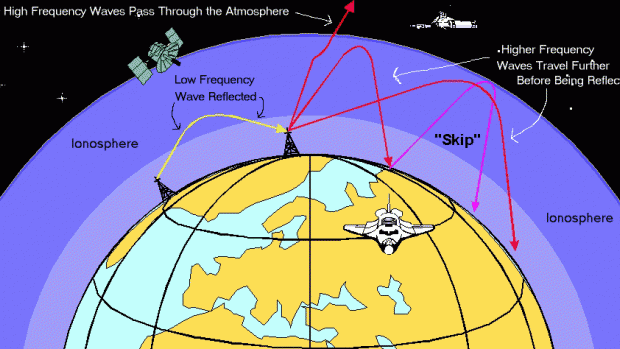
The Ionosphere is part of Earth’s upper atmosphere, between 80 and about 600 km where Extreme UltraViolet (EUV) and x-ray solar radiation ionizes the atoms and molecules thus creating a layer of electrons. the ionosphere is important because it reflects and modifies radio waves used for communication and navigation. Other phenomena such as energetic charged particles and cosmic rays also have an ionizing effect and can contribute to the ionosphere.
The atmospheric atoms and molecules are impacted by the high energy the EUV and X-ray photons from the sun. The amount of energy (photon flux) at EUV and x-ray wavelengths varies by nearly a factor of ten over the 11 year solar cycle. The density of the ionosphere changes accordingly. Due to spectral variability of the solar radiation and the density of various constituents in the atmosphere, there are layers are created within the ionosphere, called the D, E, and F-layers. Other solar phenomena, such as flares, and changes in the solar wind and geomagnetic storms also effect the charging of the ionosphere. Since the largest amount of ionization is caused by solar irradiance, the night-side of the earth, and the pole pointed away from the sun (depending on the season) have much less ionization than the day-side of the earth, and the pole pointing towards the sun.
Impacts
Radio Communication
Radio Navigation (GPS)
Satellite Communication